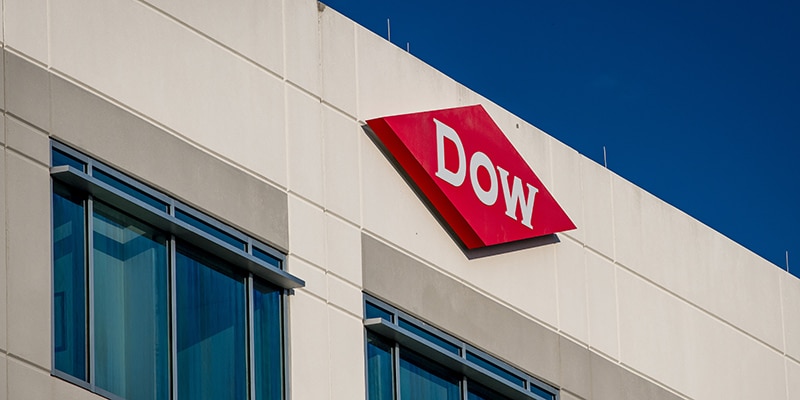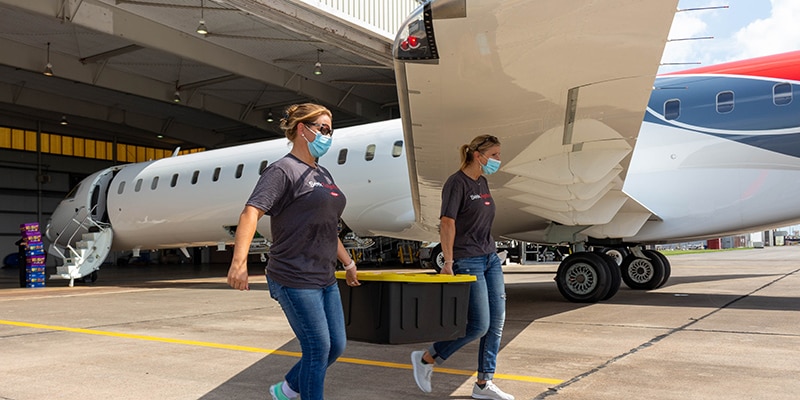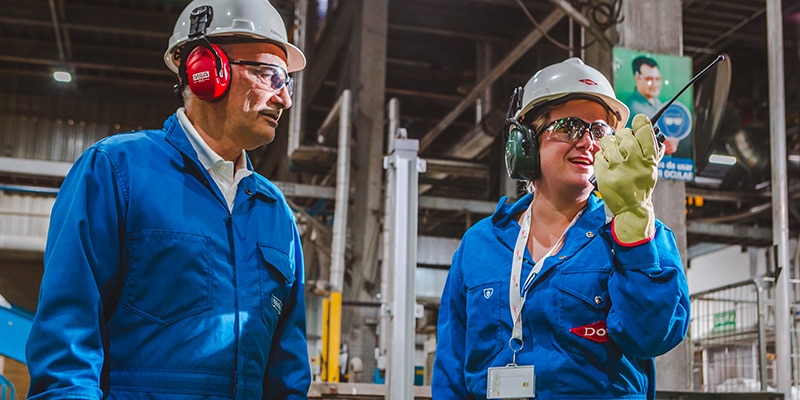While looking to build an expansion plant on the Gulf Coast, Dow officials, including Willard Dow, studied locales from New Orleans, Louisiana, down to Brownsville, Texas. As the coastal tour came to a close, two sites stood above the rest: Corpus Christi and Freeport.
Corpus Christi was a town with hospitals, schools and the infrastructure to support a mass influx of workers. Freeport was a small village in the middle of marshland with little to offer in facilities and services.
As the Texas Division of Dow continued to grow, it became harder for the workers building and operating the plants to find living quarters. So Dr. A.P. Beutel, the site’s general manager, organized the construction of “Camp Chemical,” a temporary housing area. At its pinnacle, “Camp Chemical” was the largest city in Brazoria County and home to more than 12,000 people.
With help from the U.S. Government, construction on the project began Feb. 20, 1942, and was completed in a month’s time. “Camp Chemical” consisted of more than 2,000 cottages for married workers and 46 barracks able to house 120 men each. It also contained a cafeteria that could seat 1,000, a school, a large store, an entertainment hall, a ballpark, a firehouse and a police station. Roads, sidewalks, running water, sewer lines and electricity kept it running. Soon after the war ended, “Camp Chemical” was torn down to make room for more plants.
As “Camp Chemical” was being built, Willard Dow, his brother Alden and Beutel set out to find a location to build a permanent city. They explored nearby areas by horseback, becoming intrigued by an area not far from Freeport that was once the Abner Jackson plantation. A freshwater lake on the property was dubbed Lake Jackson, so the men decided to give the new town the same name.
Alden Dow was put in charge of creating the town of Lake Jackson, and, in early 1943, workers started to clear the land. By the summer, paved streets such as Winding Way and Yaupon had already popped up. Alden designed Lake Jackson as a home for 5,000 people, giving the city winding and meandering streets because he felt there should be something of a surprise around each turn. For homes, people were able to choose from six unique Alden designs. The first residents moved into Lake Jackson at the end of 1943.
Excerpted from Dow’s Texas Operations History.
Learn More





